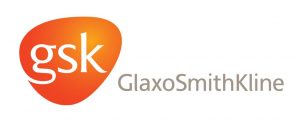Frédéric Berdoz
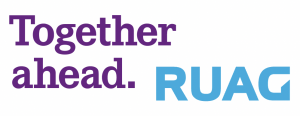
Alongside the Aerostructures, MRO International and Ammotec divisions, RUAG Space is one of four business units of the technology group RUAG International. The Space division has 14 sites in Switzerland and worldwide with a total of over 1200 employees. RUAG Space is now the market leader as a supplier to Europe’s space industry and will soon rebrand itself as beyond gravity to focus solely on the space market.
The main objective of the internship was to determine if data science, and in particular artificial intelligence, could bring value to the space industry. As of today, only a handful of mechanisms are produced in large enough quantities to have a suitable dataset for AI. This is now changing with the creation of satellite « constellations ».
During my internship, I had the opportunity to work on several projects to apply different data science techniques, from classical signal processing to state-of-the-art deep learning models. The most challenging part was to create clean and unbiased datasets. For this, I had the opportunity to work directly in the clean room to gather data from the hardware itself. Once the datasets created, the goal was to analyze them with a specific goal, e.g. finding anomalies or predicting an outcome using AI.
As an example, here is a figure that I created showing a voltage drop test time series with its Fourier transform and its spectrogram. The goal here was to better understand the profile of the resistive noise that appeared on the slip rings of a solar array drive mechanism. Such visualization helped other engineers to better visualize the huge amount of data that was gathered in this project.
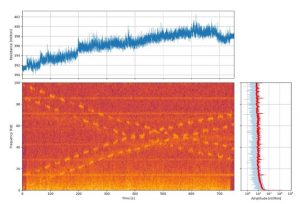
Cravero Baraja Maximo
Description
Throughout my internship at the IBM Zürich Research Lab, I worked on developing feature engineering and machine learning techniques for Anti-Money Laundering (AML). More specifically I worked on scalable pattern detection and subgraph encoding techniques for financial transaction graphs, and the implementation of these detected features in Machine Learning (ML) architectures, namely boosting algorithms and Graph Neural Networks (GNNs).
These features are then used to extend the raw transaction graph information and improve fraud detection performance using classical ML algorithms. To capitalize on the relations provided between users making transactions, we also made use of GNNs which leverage topological information by propagating feature information through the graph.
Money laundering is a big challenge with large costs incurred by several banks. An effective detection algorithm would provide immense value, and the proof of concept I have worked on will serve as a reference for future iterations on novel AML algorithms developed at the research lab.
Tyler Benkley
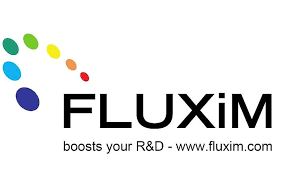
Description
Fluxim is a company based in Winterthur, affiliated with the local university that sells simulation software and measurement hardware for research and development of displays, lighting and photovoltaic cells in industry and academia.
During my time there, I worked on the modeling of OLED pixels. Standard OLEDs are comprised of a stack of transparent materials. At each flat material interface, incident light is partially transmitted and reflected according to the Fresnel equations, typically resulting in only about 20% efficiency. One approach to enhance this low efficiency is to have sinusoidal material interfaces instead of flat ones. My job was to develop a prototype for simulating the efficiency of an OLED with sinusoidal interfaces through rigorous numerical modeling of Maxwell’s equations. The first step was to carry out a literature review on existing methods. Then, together, the company and I chose the preferred method which I developed in Matlab during the rest of the internship.
Below you may find a Matlab simulation of the spectral radiance of a flat OLED with respect to the in-plane wave vector and the thickness of one of the materials (for optimization purposes). Total internal reflection is visible beyond Brewster’s angle as postulated by Fresnel’s equations.
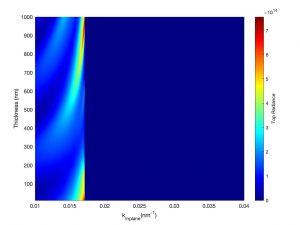
Bassanini Micol

Description
Empa, the Swiss Federal Laboratories for Materials Science and Technology is an interdisciplinary Swiss research institute for applied materials science and technology. In particular, I was working in the SymBioSys (Simulation Biological System) group located in the Empa’s center in St. Gallen (https://www.empa.ch/web/simbiosys).
This project was performed in collaboration with a sensor company.
In this project, I looked for using such sensor data to better predict how the life of each fruit and vegetable in a refrigerated truck or trailer evolves. For that purpose I developed digital twins of the cargo, based on measured air temperature and humidity data in fruit cold chains by commercial sensors. These data are fed into a physics-based model to provide theoretical estimates of key performance indicators such as average
cargo temperature, mass loss, and remaining fruit quality at the end of the chain, based on quality decay as a function of temperature.
Fedor Sergeev

Description
Spiden is a startup company that aims to develop compact devices for continuous monitoring of biomarkers and drugs in bodily fluids. By bringing together experts in spectroscopy, electronics, fluidics, biomedical science and machine learning, Spiden aims to develop revolutionary medical technologies that will improve the lives of millions of people.
I worked at Spiden as a Data Science Intern for about 6 months. In my internship, I performed exploratory analysis of spectral and medical data, developed machine learning models for reconstruction of biomarker concentrations in bodily fluids, and investigated application of deep generative neural networks to production of synthetic spectra.
I greatly enjoyed my internship at Spiden. The team is very professional and experienced, and incredibly welcoming and friendly. Spiden offers a unique setting for multidisciplinary research, and I wholeheartedly recommend it to any EPFL student.
Romain Palazzo

Description
Logitech is a Swiss manufacturer of computer peripherals and software, with headquarters in Lausanne, Switzerland. The company has offices throughout Europe, Asia, Oceania, and the Americas, and is one of the world’s leading manufacturers of input and interface devices for personal computers (PCs) and other digital products. Logitech accounts more than 9000 employees, develops and markets personal peripherals for PC navigation, video communication and collaboration, music and smart homes. This includes products like keyboards, mice, tablet accessories, webcams, Bluetooth speakers, universal remotes and more. Recently, Logitech has developed a lot of products and services for gamers and the gaming area in general.
The aim of the project is the study of in-ear audios to detect and estimate the amount of water intake in daily life recording conditions. The first part of the project was to build a labeled database of in-ear audio recordings during actual or simulated activities of daily living (ADL). To do this, an experiment was performed over 29 subjects. Then, the second part of the project was to use the database to train machine learning models for the detection of sip event as well as amount estimation. For sip detection, the best models classify the sip event with an accuracy of 85% while for the amount estimation, best models build have a mean relative error around 30%.
Wang Yuqi
Description
Autodesk, is an American multinational software corporation that makes software products and services for the architecture, engineering, construction, manufacturing, media, education, and entertainment industries. I worked as a software engineer intern in the Plant 3D team of AutoCAD. Plant 3D is an AutoCAD-based industry-specific toolset for plant design. Customers can create and edit P&IDs and 3D models, and extract piping orthographics and isometrics in the product. My contribution involves two parts:
The first part is to identify the defects reported by QA and fix the issue. It will help the product makes better drawings. In these tasks, I benefit from what I learned in geometry processing and 3D math. This knowledge helps me a lot in my development.
The second part is that I create a tool to compare two similar isometric drawings. This tool can help developers to identify the difference quickly.
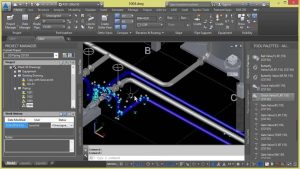
Eelis Mielonen

Description
AXA is a multinational insurance company that insures large companies as well as private customers. AXA has software and data science focused divisions in Switzerland, Paris, Spain, and Singapore, the Swiss lab being located at the EPFL innovation park. At the EPFL innovation park the teams have worked on a range of topics, including computable contracts, document understanding, and the intersection of computer vision and satellite imagery.
My project was to automatically identify insurance related risk factors from satellite imagery using computer vision models. The main scientific contribution was the study of transfer learning techniques in object detection with limited training examples. I showed that by using a base training set that is closer to the target domain, we get better validation error on the low-shot object detection task. Additionally I made additions to existing low-shot fine tuning techniques that made training more robust.
Other notable pieces of work included a web based annotation platform that allows users to create polygonal annotations of objects in satellite images. By the end of the internship I had compiled 4 object detection models for the risk factors we identified, and showed how to go from raw address data to geo-referenced predictions of risk factor locations. I integrated my models with existing foot printing software, which allowed users to visualise model predictions on a google maps type interface, and process industrial sites of any size. The internship took me through all the stages of a data science project, from data collection to model building.

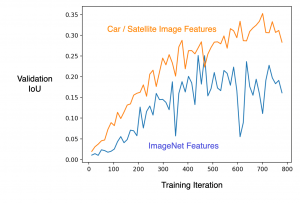
Eliott Zemour

Description
ILLUIN Technology is a french company that provides advanced technological solutions for its customers, with a particular focus on Artificial Intelligence. Founded in 2017, the ambition of the company is to be a reference actor in AI in France, intervening in applied research at the frontier between market needs and fundamental research.
The main objective of the internship was to perform industry-oriented research around Natural Language Processing and Deep Learning. Throughout the internship, I had the opportunity to carry different research projects including Document Visual Question Answering (answering questions asked on scanned document images) and Generative Models for content generation (GPT, BLOOM). This internship allowed me to learn about state of the art NLP methods, and to develop my skills in terms of distributed training and deployment of large language models.
My work resulted in several proof of concepts and demonstrations that will
serve as a reference for future iterations of the Data Science team at ILLUIN
Technology.
Adrian Sager
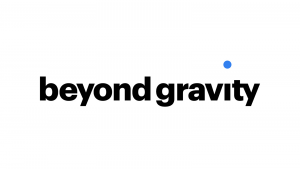
Description
Beyond Gravity [1] is a leading European provider of space technologies with approx. 1’700 employees covering 12 sites in Switzerland, Sweden, Austria, Germany, USA and Finland, and customers such us NASA, ESA, JAXA, Roscosmos, and Airbus Space & Defense.
The purpose of my internship in Zürich was to develop a simulation environment for ESA’s upcoming ExoMars mission [3] called DynRPAT, based on multi-rigid-body dynamics and a wheel-soil interaction model that interpolates real test data. This software, which is an improvement over previous work, allows fast and dynamic real-time exploration of
rover designs and terrains, for which advanced SIMD and C++ optimization techniques were applied in order to reduce execution times. Its accuracy was also improved through correlation with test data and better numerical analysis methods.
Since the geospatial information containing the proposed landing site for the ExoMars rover was incomplete, an automatic Gaussian Process Regression (GPR) based algorithm with outlier detection was used to interpolate the missing and noisy pixels.
The picture below displays DynRPAT and a realistic visualization of its ExoMars simulation
output created using the Unigine 3D engine.
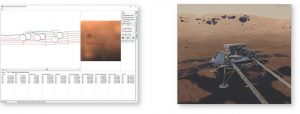
Victoria Perez Cortes
INTERNSHIP SUMMARY – GlaxoSmithKline Nyon Site GSK is a pharmaceutical and biotechnology company with global headquarters in London and was established in 2000. At Nyon site, the principal activity was focused on Consumer Healthcare products. In this site, many brands of the company were entirely manufactured from the making of the drug itself to the packaging and the quality control. The culmination of the Consumer Healthcare string of deals will result in GSK splitting into two separate companies, via a demerger and subsequent listing of the joint venture. There are now two companies, one focusing on pharmaceuticals and research & development (GSK), the other on consumer healthcare that is known now as HALEON. Nyon site is now part of the HALEON group.
I worked in the Complaints department. I provided a Business Intelligent tool to perform complaint monitoring and trends analysis and to put it in a user-friendly environment to allow anybody to assess the information. To do this, I used a Microsoft software called Power BI. It provides cloud-based BI services, known as “Power BI Services”, along with a desktop-based interface, called “Power BI Desktop”. It offers data warehouse capabilities including data preparation, data discovery, and interactive dashboards. Power BI can help connect disparate data sets, transform and clean the data into a data model and create charts or graphs to provide visuals of the data. All of this can be shared with other Power BI users within the organization. I developed several power BI for other purposes as Quality Control planning and product release performances.
I learned a lot from the professional aspect as it was my first experience in an industry. I was surrounded by benevolent people, where the communication was easy and respectful. I really learned how are structured pharmaceutical companies,
how they are regulated and what are the mechanisms for the production and the quality control. I can highly recommend this company for an internship because of the quality of work and people, as well as the recognition you get when you deliver good work.
André Langmeier
Description
Sony is one of the leaders in the technology market, with products covering video games, smartphones, imaging solutions, displays or sound systems. It is also very active in other areas, such as music, film production and distribution or new technologies development, among others.
My internship is composed of two sub-projects. Both are related to multi-modal image segmentation. The idea is to leverage other modalities such as thermal images or polarization images in addition to RGB images to obtain better performances in image segmentation.
The first sub-project was to design and develop a graphical user interface (GUI) for multi-modal image segmentation and to implement it with an already existing segmentation framework. In addition to the user interface, further performance tests have been performed with the existing multi-modal segmentation models. This aimed to define the limitations of the models.
The second sub-project is about thermal image generation from RGB images. To perform this, generative adversarial networks (GANs) have been used. The networks are based on pix2pix framework, with additional features that are adapted to the experiment at hand.
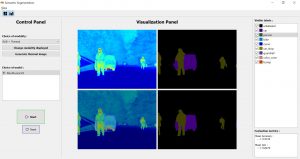
Fabio Matti
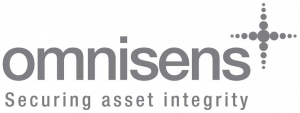
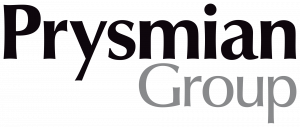
Description
Omnisens S.A. (link: https://www.omnisens.com/), now part of Prysmian Group (link: https://www.prysmiangroup.com/), is a leading company in long-distance fiber-optic sensing. Most of its customer base comes from the energy industry. The company develops solutions for monitoring the integrity of cables and pipelines. Generally, their approach is to use a fiber-optic cable extending along the asset, periodically send pulsed LASER through the fiber, and subsequently measure the backscattering signal which results from photons partially being reflected in the fiber. The two measurement systems they have developed are distributed temperature sensing (DTS) based on Brillouin scattering (interaction of light with the acoustic modes of vibration, which is wavelength sensitive to the temperature) and distributed acoustic sensing (DAS) based on Rayleigh scattering (elastic scattering of photons by particles whose sizes are much smaller than that of the photons’ wavelength, which is phase sensitive to variations in temperature or strain). These time of flight measurements allow the indirect determination of temperature, energy, or strain in every position along the fiber and are a much better alternative to having thousands of individual measurement devices distributed along the fiber for this purpose.
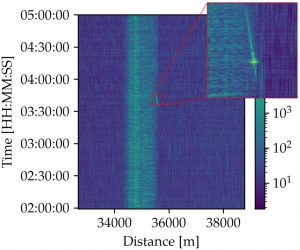
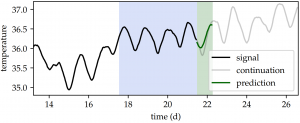
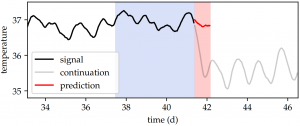
Niccolo’ Polvani
Logitech is a consumer electronics company based in EPFL innovation park. Their main products are computer peripherals such as mice, keyboards and cameras. During my internship there, I worked on various tasks related to speech enhancement, with the final goal of deploying
an efficient system on a low-powered device such as earbuds.
The working language was English, and although the audio team based in Lausanne is small (about 5 people, working mainly in R&D), I had the opportunity to connect with various Business Groups that are working on audio products from all over the world. It was very interesting to exchange ideas with professionals in the sector and understand what are the requirements to make a great product.
Among other tasks, I focused on Voice Activity Detection (VAD): i.e. predicting the presence or absence of the target user’s speech, in a noisy environment that includes interference speech from other speakers. We used multimodal signals acquired through a traditional
microphone and a bone conduction sensor. A bone conduction sensor captures the vibration of the bones of the human body and it is resistant to external noise, whereas a traditional microphone relies on vibration of the air. I trained a small Convolutional Recurrent Neural Network with only 5k parameters, that classifies each 20 ms frame of the signal. The overall system was successfully deployed on a small processor that can be installed on ear-buds and has a latency of 4.2 ms.
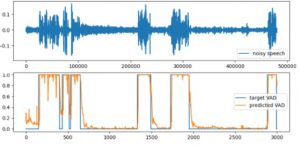
The figure below shows a sample inference of the model at SNR = 12 dB
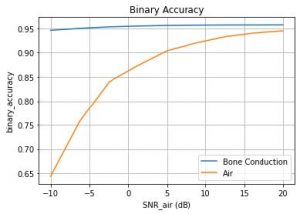
We also evaluated the difference in performance between the model relying on air signal only, and the advantage that the bone conduction sensor provides:
Oisín Morrison

Description
The Institute for Computational Biology is a research institute comprising part of the Helmholtz Zentrum München. Its key aim is to improve the modelling of cell differentiation pathways, allowing for better understanding of diseases at the cellular level.
During my time there, I worked primarily on improving current models for RNA velocity to leverage multimodal data. This is an important advancement to make since it allows for the use of a wider range of data and can offer better predictions of cell differentiation pathways than solely using single-cell data. My work consisted of the creation and derivation of a new RNA velocity model incorporating multimodal data. This involved researching and analysing suitable datasets for matching, as well as the implementation of new models within the existing variational autoencoder method for parameter inference and benchmarking this approach against existing models.
During the internship I was also given the opportunity to attend a conference on “Single Cell Genomics meets Data Science”, which allowed me to see the current developments in the field and to chat with domain experts. This was extremely insightful to attend and was certainly a highlight.
In brief, my work represents a next step towards further extension of the RNA velocity framework to incorporate multimodal data. During my time in Munich, I was able to learn a great deal about the biological processes of cell differentiation and to gain hands on experience working with machine learning models. Depicted below is an example of RNA velocity predictions using the classical RNA velocity approach.
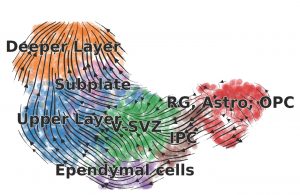
Francesco Salvi
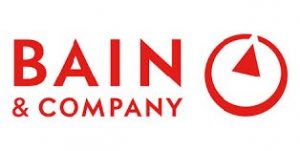
Description
Bain & Company is a leading management consulting firm that advises the
world’s leading businesses, governments, and organizations on strategy, op-
erations, technology and marketing across a variety of industries. I did my
internship within Bain’s Advanced Analytics Group (AAG), in a special-
ized unit composed of experts in Data Science and Machine Learning who
support case teams in leveraging client’s data to gain advanced insights and
building complex models. The internship was carried in Munich (Germany)
over the summer, for a total period of 10 weeks.
During the internship I worked for a new digital venture recently launched
by Bain called NPSx, focused on creating a platform around customer ex-
perience. In particular, I worked in the team in charge of developing a
product to provide companies with a single customer view aggregating all
their customer data, including predictive models for relevant metrics such
as NPS and CLV. My tasks included building classification methods for CX,
forecasting time series, incorporating MLOps practices and productionizing
our pipeline by refactoring and automation through a Cloud setup.
When I joined Bain, one of the first thing I was introduced to is the
company’s motto, ”A Bainie never lets another Bainie fail”. While that
felt mostly rhetorical at the beginning, I realised day by time through my
Bain. Every single person I met during the summer was incredibly support-
ing, spontaneously offering for his help or advice. I feel very lucky for this
experience and I would recommend applying to Bain to anyone interested
in consulting!

